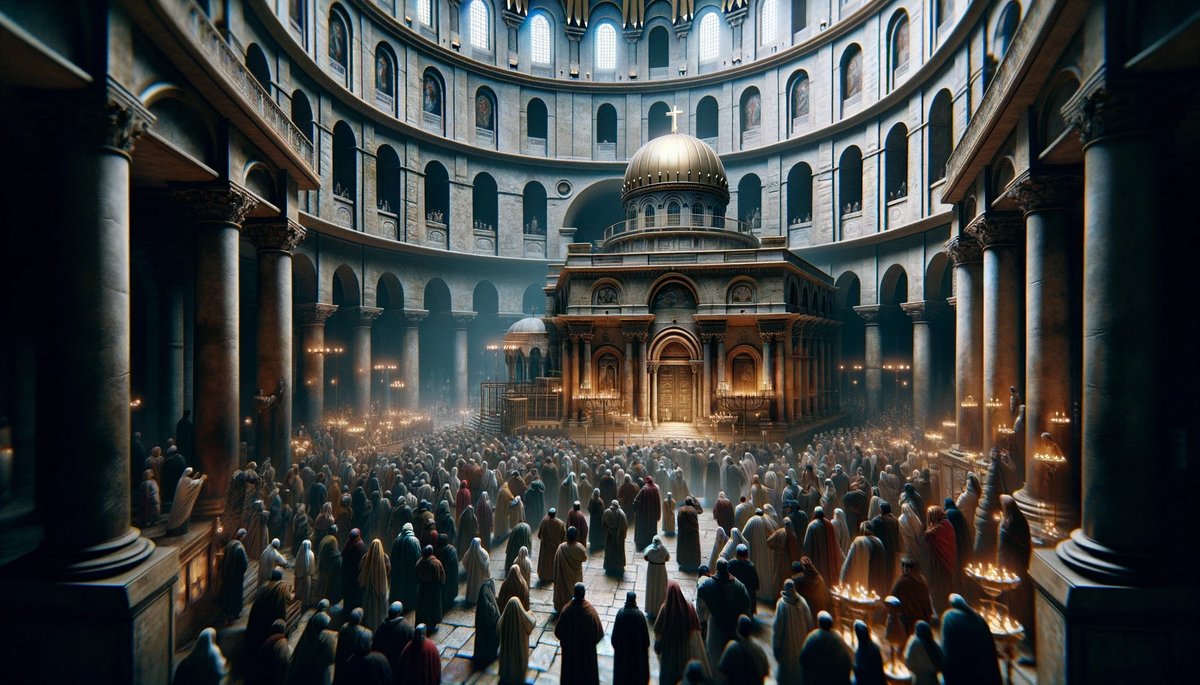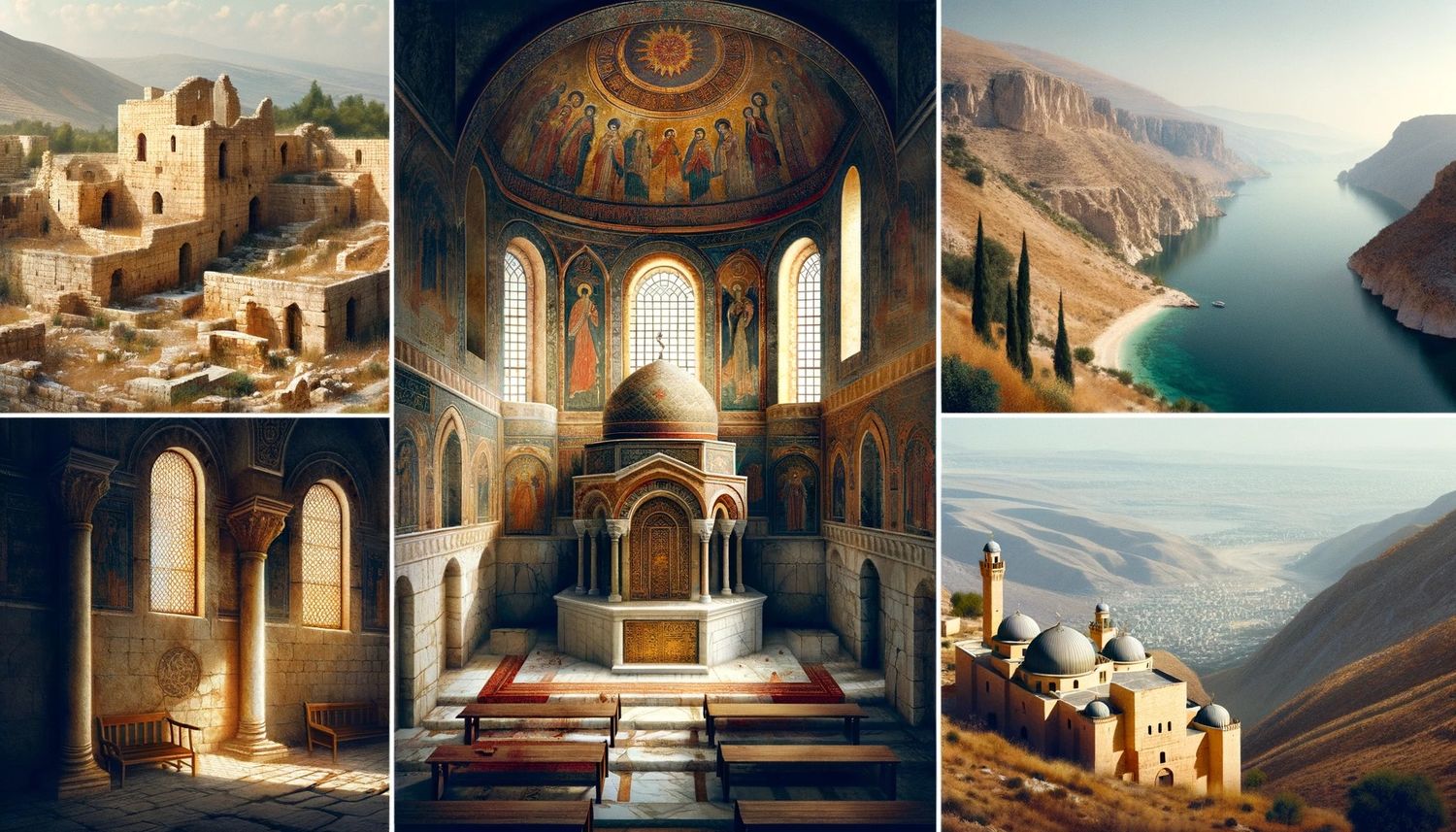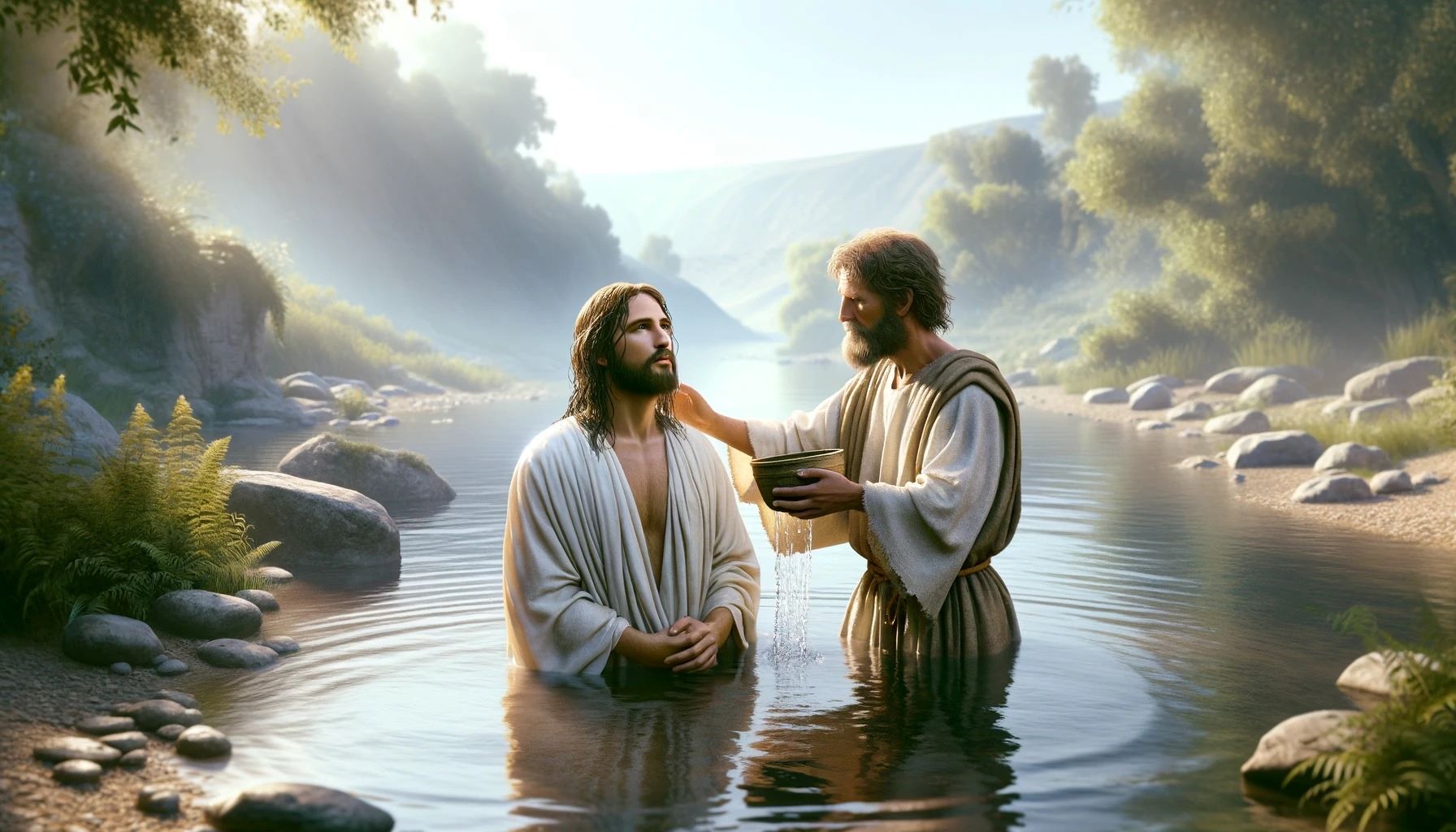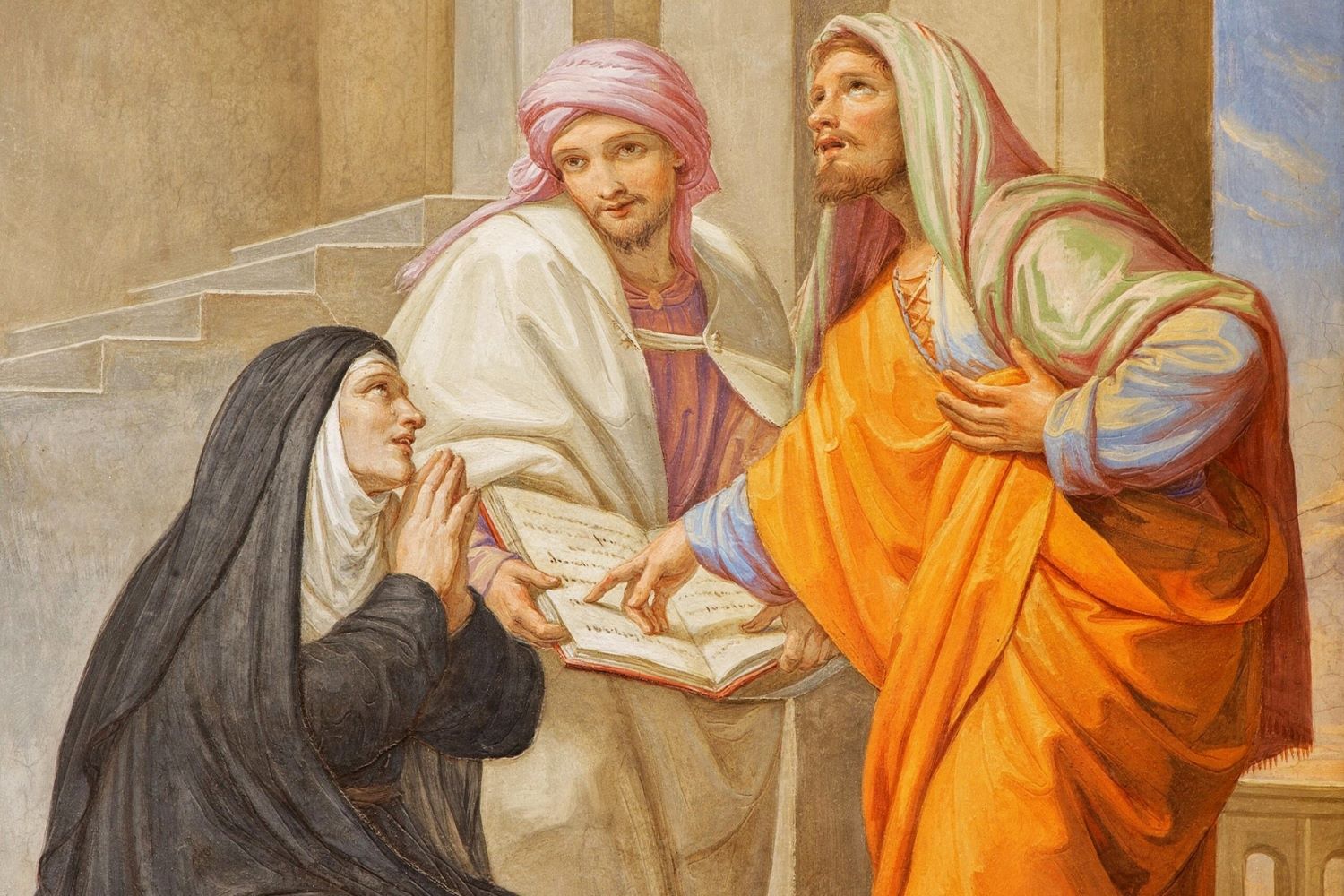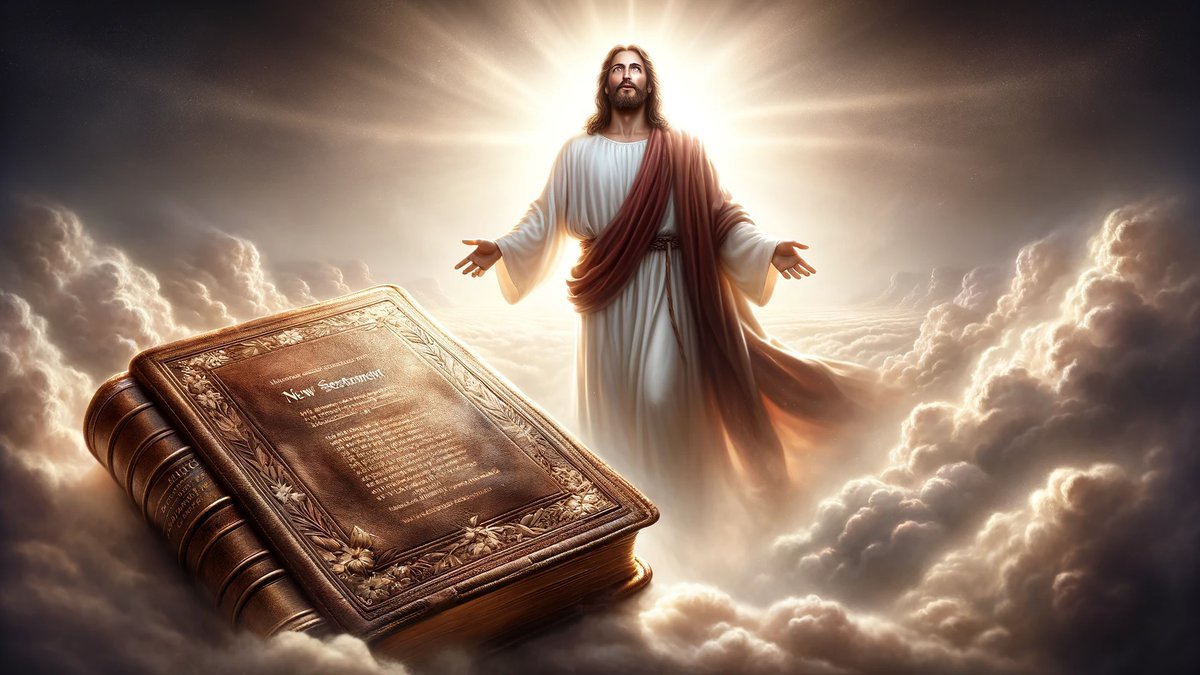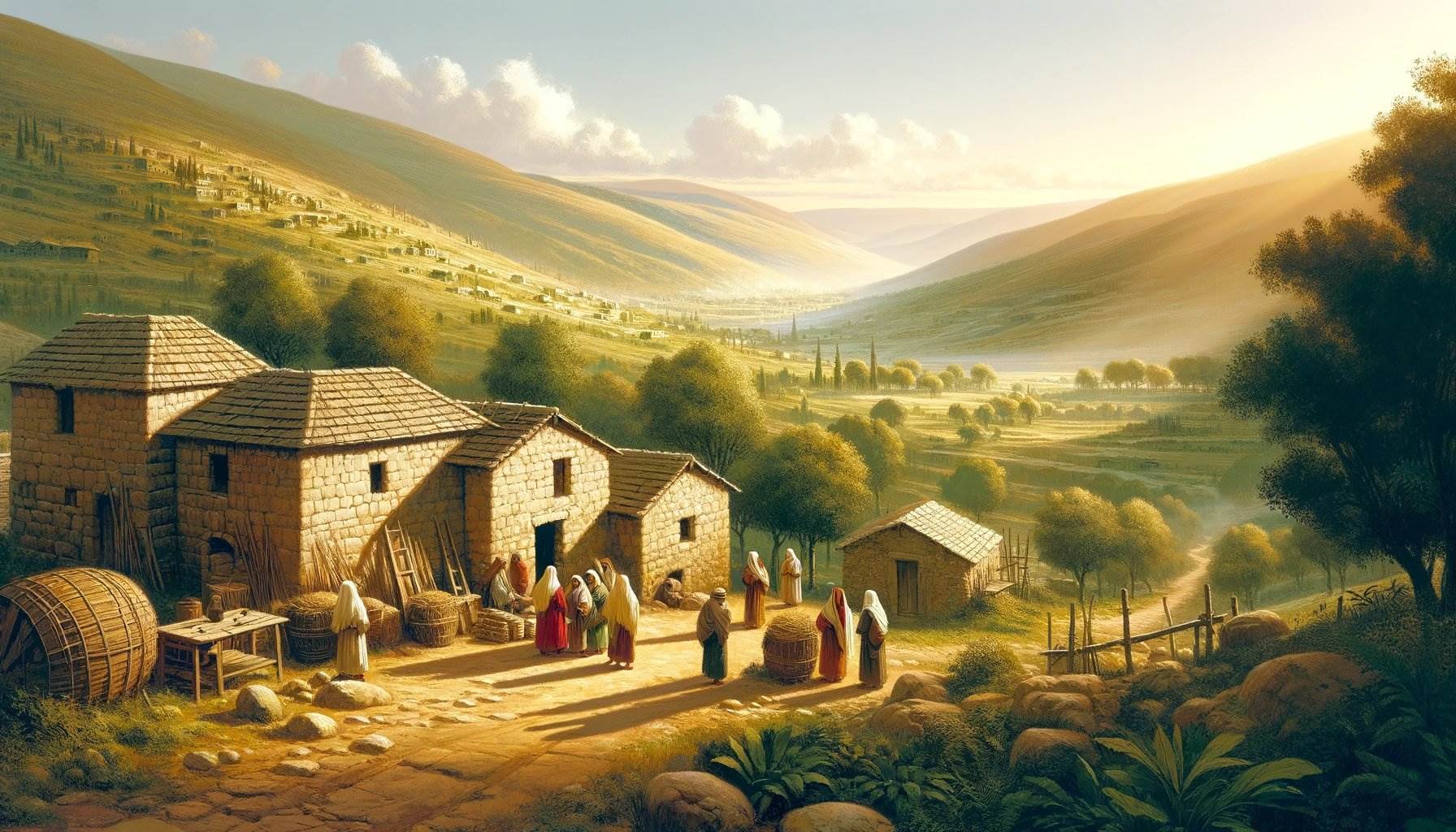Home>Christian Videos>Bible Stories>Where Was Jesus Christ Buried


Bible Stories
Where Was Jesus Christ Buried
Published: March 2, 2024
Peter Smith, Editorial Director at Christian.net, combines deep insights into faith, politics, and culture to lead content creation that resonates widely. Awarded for his contributions to religious discourse, he previously headed a major organization for religious communicators, enhancing dialogue on faith's societal impacts.
Discover the biblical account of Jesus Christ's burial and resurrection in this compelling exploration of Bible stories. Uncover the sacred significance of this pivotal event.
(Many of the links in this article redirect to a specific reviewed product. Your purchase of these products through affiliate links helps to generate commission for Christian.net, at no extra cost. Learn more)
Table of Contents
Introduction
Where was Jesus Christ buried? This question has been a topic of fascination and debate for centuries. The burial of Jesus Christ holds immense significance in Christian theology and has been the subject of historical, archaeological, and religious inquiry. In this article, we will delve into the historical accounts of Jesus Christ's burial, explore the location of his burial site, discuss the significance of his burial in Christianity, and examine the controversies surrounding his burial site. Join us as we unravel the mysteries and significance of the burial of Jesus Christ.
Read more: Who Buried Jesus Christ In The Bible
The Historical Accounts of Jesus Christ's Burial
The historical accounts of Jesus Christ's burial are primarily documented in the New Testament of the Bible, particularly in the four Gospels: Matthew, Mark, Luke, and John. According to these accounts, after Jesus was crucified at Golgotha, his body was taken down from the cross and placed in a tomb. The Gospels describe the tomb as belonging to Joseph of Arimathea, a wealthy disciple of Jesus. It is mentioned that Joseph, along with Nicodemus, another follower of Jesus, wrapped Jesus' body in linen cloths and laid it in the tomb. A large stone was then rolled in front of the entrance to seal it. These accounts provide a detailed narrative of the events surrounding Jesus Christ's burial, emphasizing the reverence and care with which his body was laid to rest.
The Gospels also mention the presence of women, including Mary Magdalene and Mary the mother of Joses, who observed the burial from a distance and later returned to the tomb after the Sabbath. Their presence at the burial site and their subsequent visit to the tomb play a significant role in the accounts of Jesus Christ's resurrection. These historical accounts not only provide insights into the burial practices of the time but also serve as foundational narratives in Christian faith, shaping the beliefs and traditions surrounding Jesus Christ's death and resurrection.
The historical accounts of Jesus Christ's burial have been a subject of scholarly scrutiny and historical analysis, with theologians, historians, and archaeologists seeking to understand the events surrounding his burial within the context of the socio-cultural and religious landscape of ancient Judea. These accounts continue to be a source of contemplation and study, offering a glimpse into the profound impact of Jesus Christ's burial on the development of Christian beliefs and practices.
The Location of Jesus Christ's Burial Site
-
The Church of the Holy Sepulchre:
The Church of the Holy Sepulchre, located in the Christian Quarter of the Old City of Jerusalem, is one of the most prominent sites associated with the burial of Jesus Christ. Within the church, there is a structure known as the Edicule, which is believed to enshrine the tomb where Jesus was buried and later resurrected. Pilgrims and visitors from around the world flock to this revered site to pay homage to the sacred space where Jesus' body is said to have been laid to rest. -
The Garden Tomb:
Another site that has been proposed as the potential location of Jesus Christ's burial is the Garden Tomb, situated just outside the walls of the Old City of Jerusalem. This tranquil garden area features a rock-cut tomb that aligns with certain descriptions found in the Gospel accounts. While the Garden Tomb is not as widely recognized as the Church of the Holy Sepulchre, it remains a place of pilgrimage and contemplation for many Christians seeking to connect with the events of Jesus' burial and resurrection. -
Historical and Archaeological Investigations:
The quest to identify the precise location of Jesus Christ's burial site has spurred historical and archaeological investigations, aiming to reconcile the biblical narratives with tangible evidence. Scholars and researchers have examined ancient texts, artifacts, and geographical features in an effort to pinpoint the actual site of the tomb. These endeavors have yielded diverse theories and interpretations, contributing to the ongoing discourse surrounding the location of Jesus Christ's burial. -
Spiritual Significance and Reverence:
Regardless of the specific location, the burial site of Jesus Christ holds profound spiritual significance for Christians worldwide. It serves as a focal point for pilgrimage, prayer, and reflection, embodying the central tenets of Christian faith. The reverence accorded to these sites underscores the enduring impact of Jesus' burial on the religious consciousness of believers, transcending geographical boundaries and cultural differences. -
Theological Implications:
The location of Jesus Christ's burial site carries theological implications, shaping the understanding of his sacrificial death and triumphant resurrection. The identification of the actual tomb has theological ramifications for Christian doctrine and the interpretation of biblical narratives, influencing the faith and devotion of millions who regard the burial and resurrection of Jesus as pivotal events in the redemption of humanity.
In summary, the quest to determine the precise location of Jesus Christ's burial site continues to captivate the hearts and minds of believers and scholars alike, underscoring the enduring significance of this sacred aspect of Christian history and faith.
The Significance of Jesus Christ's Burial in Christianity
The burial of Jesus Christ holds profound significance in the theology and belief system of Christianity. It represents the culmination of Jesus' earthly ministry, his sacrificial death, and the anticipation of his resurrection. The act of laying Jesus' body in the tomb symbolizes the fulfillment of divine prophecy and the redemptive purpose of his mission. In Christian doctrine, the burial of Jesus is intricately linked to the concept of atonement, signifying the completion of his earthly journey and the beginning of the transformative events that would follow.
The burial of Jesus Christ serves as a pivotal moment in the narrative of salvation, embodying the profound love and sacrifice inherent in Christian teachings. It is viewed as a testament to the humanity of Jesus, as his body was laid to rest in accordance with Jewish burial customs, underscoring the reality of his physical existence and the depth of his identification with humanity. This aspect of Jesus' burial resonates deeply with believers, emphasizing the empathy and compassion of a divine savior who experienced the full spectrum of human existence, including death and burial.
Furthermore, the significance of Jesus Christ's burial extends to the theological understanding of his victory over sin and death. According to Christian belief, the period between Jesus' burial and resurrection represents a transformative interval during which he descended into the realm of the dead, triumphing over the powers of darkness and initiating the liberation of humanity from the bondage of sin. This profound theological interpretation underscores the redemptive power of Jesus' burial, as it marks the prelude to the ultimate triumph of his resurrection, offering hope and assurance to believers regarding the promise of eternal life.
The burial of Jesus Christ also holds symbolic and spiritual significance within the framework of Christian liturgy and worship. It is commemorated as an essential component of the Easter Triduum, a period of solemn reflection and observance leading up to the celebration of Easter. The rituals and devotions associated with Jesus' burial serve as a focal point for spiritual contemplation, inviting believers to meditate on the profound implications of his death and the anticipation of his resurrection. This sacred observance reinforces the central tenets of Christian faith, emphasizing the transformative power of Jesus' burial in the narrative of redemption and renewal.
In summary, the significance of Jesus Christ's burial in Christianity encompasses theological, symbolic, and spiritual dimensions, encapsulating the core beliefs and teachings of the Christian faith. It stands as a testament to the enduring impact of Jesus' redemptive mission and the foundational role of his burial in shaping the beliefs and practices of millions of adherents worldwide.
The Controversies Surrounding Jesus Christ's Burial Site
The quest to identify the precise location of Jesus Christ's burial site has been shrouded in controversies and debates, reflecting the complexities inherent in reconciling historical accounts, religious traditions, and archaeological evidence. The controversies surrounding Jesus Christ's burial site encompass diverse perspectives and interpretations, giving rise to a rich tapestry of scholarly inquiry and theological discourse. Here are some of the key controversies and debates that have emerged in relation to the burial site of Jesus Christ:
-
The Church of the Holy Sepulchre vs. The Garden Tomb:
One of the primary controversies revolves around the competing claims regarding the authenticity of the Church of the Holy Sepulchre and the Garden Tomb as the actual site of Jesus Christ's burial. While the Church of the Holy Sepulchre has long been venerated as the traditional location of the tomb, the Garden Tomb has garnered attention as an alternative candidate based on certain archaeological findings and textual analyses. This debate has sparked fervent discussions among scholars, religious authorities, and pilgrims, each advocating for the credibility of their preferred site. -
Historical Validity vs. Faith Tradition:
Another controversy pertains to the tension between historical validity and faith tradition in determining the burial site of Jesus Christ. While historical and archaeological investigations seek empirical evidence to substantiate the location of the tomb, faith traditions and religious narratives often prioritize the spiritual and symbolic significance of the site. This divergence of perspectives has engendered complex dialogues regarding the interplay between historical authenticity and religious reverence in the context of sacred sites associated with Jesus Christ's life and death. -
Archaeological Discoveries and Interpretations:
The controversies surrounding Jesus Christ's burial site intersect with the realm of archaeological discoveries and interpretations, as scholars and researchers endeavor to unravel the enigmas of ancient tombs and burial practices. The examination of archaeological artifacts, inscriptions, and architectural features has yielded diverse theories and conjectures, prompting intense deliberations about the plausibility and implications of various hypotheses regarding the location of the tomb. -
Denominational Perspectives and Traditions:
Within the spectrum of Christianity, denominational perspectives and traditions have contributed to the controversies surrounding Jesus Christ's burial site. Different Christian denominations and theological traditions may espouse distinct beliefs and interpretations regarding the significance of specific burial sites, leading to divergent viewpoints and allegiances. These denominational dynamics have added layers of complexity to the ongoing discussions about the authenticity and reverence of the burial site. -
Global Pilgrimage and Religious Identity:
The controversies surrounding Jesus Christ's burial site intersect with the global phenomenon of pilgrimage and religious identity, as millions of believers from diverse cultural and geographical backgrounds seek to connect with the sacred heritage of Christianity. The significance of the burial site extends beyond scholarly debates, resonating deeply with the spiritual aspirations and communal identities of pilgrims and religious communities worldwide, thereby amplifying the stakes involved in the controversies surrounding its location.
In summary, the controversies surrounding Jesus Christ's burial site reflect the intricate interplay of historical, religious, and cultural dimensions, underscoring the enduring fascination and significance of this sacred aspect of Christian heritage. These controversies continue to inspire rigorous inquiry and impassioned dialogue, enriching the ongoing quest to unravel the mysteries surrounding the burial of Jesus Christ.
Read more: Whose Tomb Was Jesus Christ Buried In
Conclusion
In conclusion, the burial of Jesus Christ stands as a pivotal and enigmatic facet of Christian history and faith, encapsulating profound theological, symbolic, and historical dimensions. The historical accounts of Jesus Christ's burial, as documented in the New Testament, provide a rich narrative that has shaped the beliefs and practices of Christianity. The quest to identify the precise location of Jesus Christ's burial site has sparked controversies, debates, and scholarly investigations, reflecting the enduring fascination and significance of this sacred aspect of Christian heritage. The Church of the Holy Sepulchre and the Garden Tomb have emerged as prominent contenders for the authentic burial site, each carrying its own historical, archaeological, and religious implications. The significance of Jesus Christ's burial in Christianity extends beyond historical inquiry, embodying the core tenets of Christian faith and serving as a focal point for spiritual contemplation, pilgrimage, and communal identity. The controversies surrounding the burial site underscore the complexities inherent in reconciling historical authenticity, faith traditions, and archaeological evidence, fueling ongoing dialogues and inquiries that enrich the tapestry of Christian heritage. Ultimately, the burial of Jesus Christ remains a profound and enduring symbol of hope, redemption, and spiritual transformation, resonating with believers across the globe and perpetuating the timeless legacy of Christian faith.
